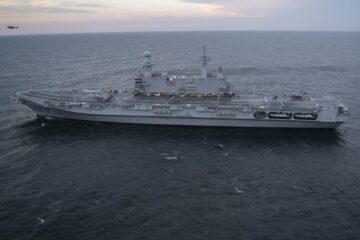In the last several months, warships from as far afield as India, Japan, the United States and the United Kingdom have visited Fiji during patrols of the region. More often than not patrolling Fiji’s Exclusive Economic Zone (EEZ) along the way and conducting exercises with the Fijian Navy.
Notable recent visitors have included USS Jackson (LCS-6), HMS Spey (P-234), JS Kirisame (DD-104) and INS Satpura (F-48).




During his own visit to Suva earlier this month, Commander of the U.S Pacific Fleet, Admiral Samuel Paparo, told a gathered crowd aboard USS Jackson that the ships visit to Suva was an “opportunity” for partners to join together in support of a free and open Indo Pacific.
“For all of us, we are finally coming out of this terrible pandemic and it gives an opportunity for dear friends and equal partners to join together to ensure a free and open Indo Pacific”
Dr Anna Powles, a Senior Lecturer at Massey University’s Centre for Defence and Security Studies, told Naval News that the foreign warships were performing two main missions during their deployments.
“These naval deployments in the Pacific are ‘maritime presence missions’, and reflect the strategic significance of the Pacific; however they also have a dual purpose, such as the Illegal Unreported and Unregulated Fishing (IUU) patrols, which align with Pacific regional security priorities.”
Mixed Reactions to Increased Presence
She added that, despite this alignment of goals, Pacific countries had legitimate concerns about the increasing militarisation of the region.
“Pacific countries have been very clear about their concerns that growing strategic competition will lead to the increased militarisation of the region.”
Earlier this year, warships from China, Japan, Australia and the United States all descended on Tonga to assist in the aftermath of the eruption of Hunga-Tonga-Hunga-Ha’apai. Notably, it was the first time that both Japan and China had sent large, amphibious vessels into the region for Humanitarian Aid and Disaster Relief (HADR) operations.

Dr Powles said that, while once again, the assistance was no doubt welcomed by the Pacific it raised the risk of a miscalculation or incident.
“More defence activity in the Pacific certainly raises the stakes of a miscalculation. This has long been the concern when multiple countries are deploying into the same environment, such as a disaster.”






